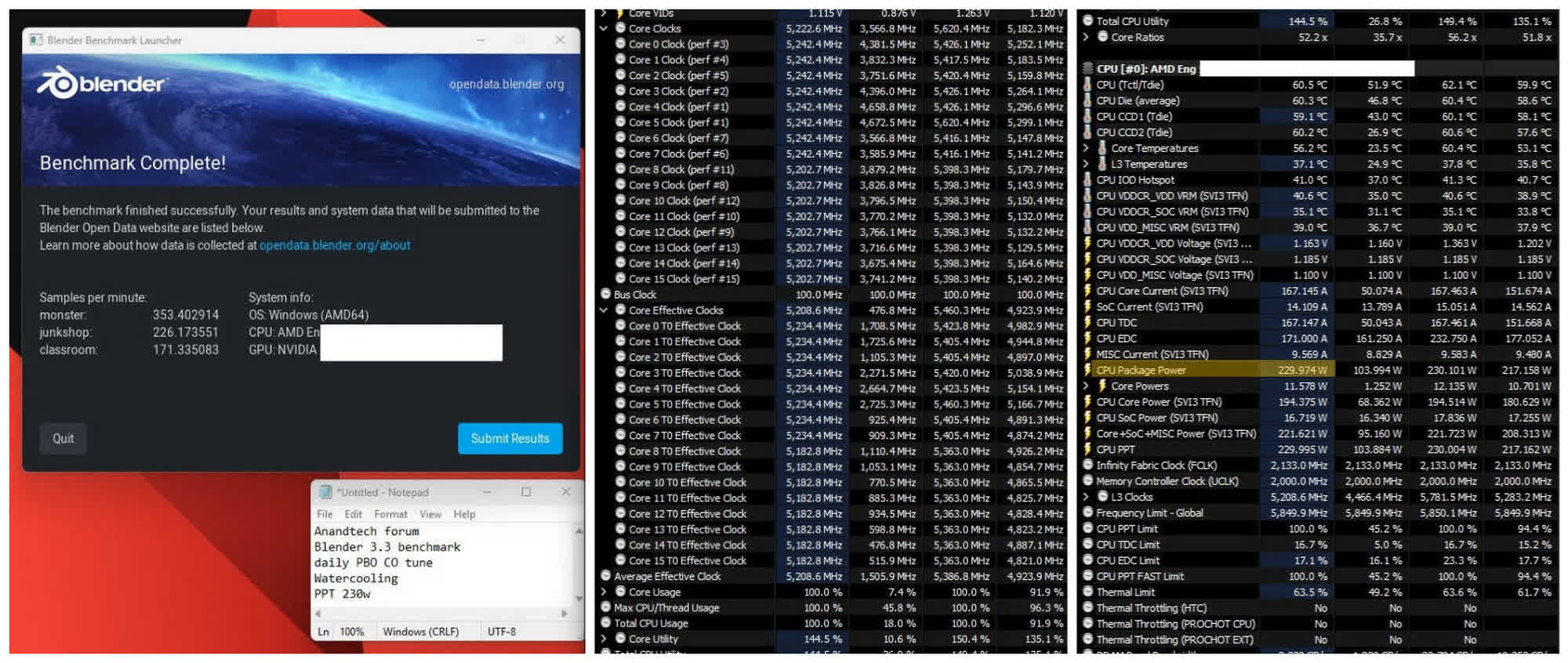Something to look forward to: AMD is expected to unveil its Zen 5 lineup later this month, and according to the latest reports, the new chips could offer a massive upgrade over their predecessors. This is particularly exciting news for those seeking the best solutions for 3D modeling, animation, rendering, video editing, and compositing.
The information comes from Anandtech forum user Igor_Kavinski, who shared a series of Blender benchmarks for the Ryzen 9 9950X at various TDPs over the past several days. The results highlight the upcoming processor’s performance at 90W, 120W, 160W, and 230W, providing potential buyers with insights into both its performance and power efficiency.
At 60W, the Ryzen 9 9950X achieved a combined Blender score of 327.7, while at 90W, it notched up a significantly higher 486.9 points. At 120W, the new chip scored an impressive 576 points, and at 160W, it reached a score of 678. In comparison, the Ryzen 9 7950X managed only 599.2 points at 170W (courtesy: Hail The Brain Slug), suggesting that the 9950X could outperform its predecessor while being more efficient.
The most interesting results appear when both chips were tested at 230W. At that power level, the 9950X scored 353.4 in the Monster test within Blender, 226.2 in Junkshop, and 171.3 in Classroom, which are around 20 percent higher than the 297.3, 180.2, and 139.9 points achieved by the 7950X in the same benchmarks, respectively.
The scores are even more impressive considering that the chip Kavinski used is only an engineering sample and not the final retail product. Engineering samples are used for testing purposes and often have lower clock speeds compared to retail SKUs, meaning they do not always offer peak performance. In this case, the 9950X ES had a boost speed of up to 5.62 GHz, which is lower than the chip’s official 5.7GHz turbo clock.
The test system for the Ryzen 9 9950X utilized AMD’s Precision Boost Overdrive feature, providing a small performance boost over the default setup. It also employed water cooling, which ensured that the thermals never exceeded 62 degrees Celsius. The rest of the hardware specs of the test PC remain unknown at this point.





